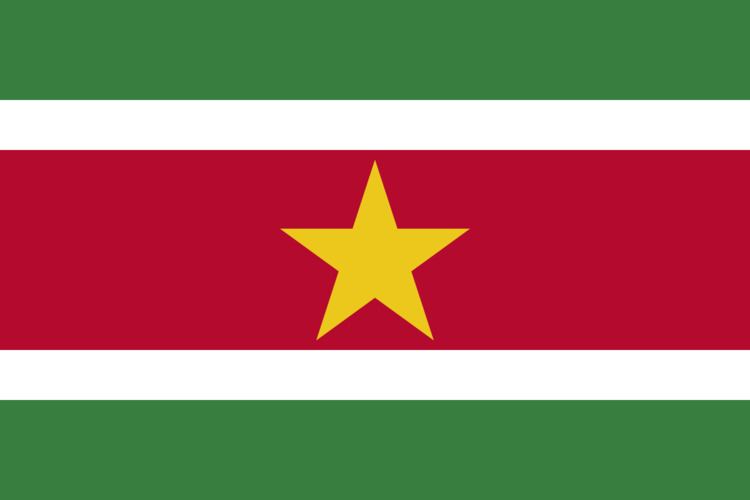Suriname 570,000 Belgium 20,000 Guyana 13,338 | Netherlands 350,000 United States 13,338 French Guiana 4,662 | |
 | ||
Surinamese people are the citizens of Suriname and their descendants abroad. Suriname is a multi-ethnic nation, home to people of different ethnic and national backgrounds. As a result, Surinamese do not consider their nationality as an ethnicity but as a citizenship with various ethnicities.
Contents
Ethnic groups
The population of Suriname is a mixture of different ethnic groups:
The seventh census of Suriname in 2004 reported the following:
Population
Most of the inhabitants live in the north of the country, in the districts of Paramaribo, Wanica and Nickerie. The least populated county is Sipaliwini, which covers most of the nation's interior and is sparsely inhabited. More than half of the population lives in and around the capital.
Emigration
Migration to the Netherlands began during the colonial era. Initially this was mainly the colonial elite but expanded during the 1920s and 1930s to the less fortunate inhabitants looking for better education, employment, or other opportunities.
Approximately 350,000 individuals of Surinamese descent now live in the Netherlands, with mass migration beginning in the years leading up to Suriname's independence in 1975, and continuing in the period immediately after independence and during military rule in the 1980s. Surinamese continued to migrate to the Netherlands throughout the 1990s because of the then tough economic situation in Suriname. Other emigration destinations include French Guiana and the United States.
Languages
In Suriname, there are no fewer than twenty languages spoken. Most Surinamese are multilingual. In terms of numbers of speakers are the main languages in Suriname, successively the Dutch language, Sranan Tongo (Surinamese Creole), Sarnami (Surinamese Hindi), Javanese, and different Maroon languages (especially Saramaccan and Ndyuka). In recent years, English is being spoken more and more by the majority of the younger populace. Since most Surinamese people are multilingual (for instance Dutch and Sranan Tongo), it is not easy for people to share in a particular language group.
According to the results of the seventh general population and housing census, which was held in 2004, Dutch is the most spoken home language in Suriname. In over 70% of households Dutch is spoken as the first or second language. The lingua franca is Sranan Tongo, which literally means "Surinamese language", and is spoken primarily as a second language in 46% of households, along with 22% Sarnami Hindustani and 11% Javanese.
Religion
The following religious statistics have been reported as of 2010:
